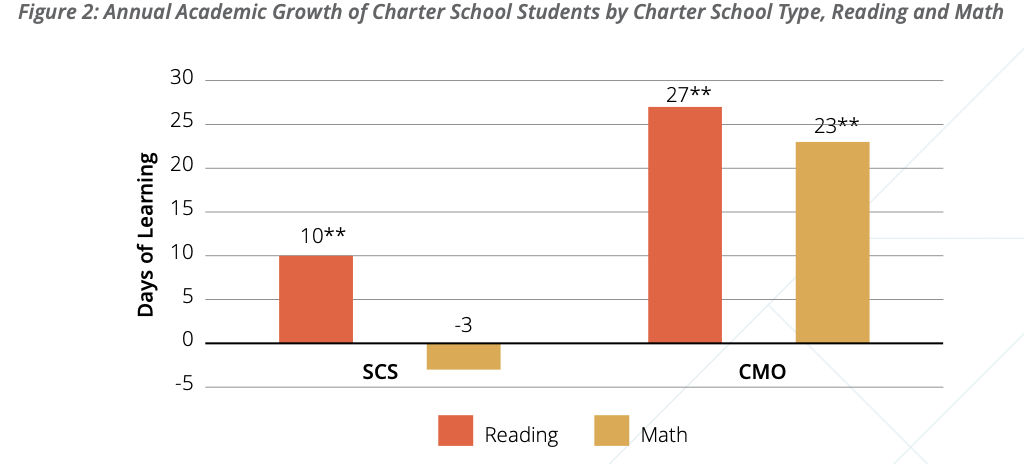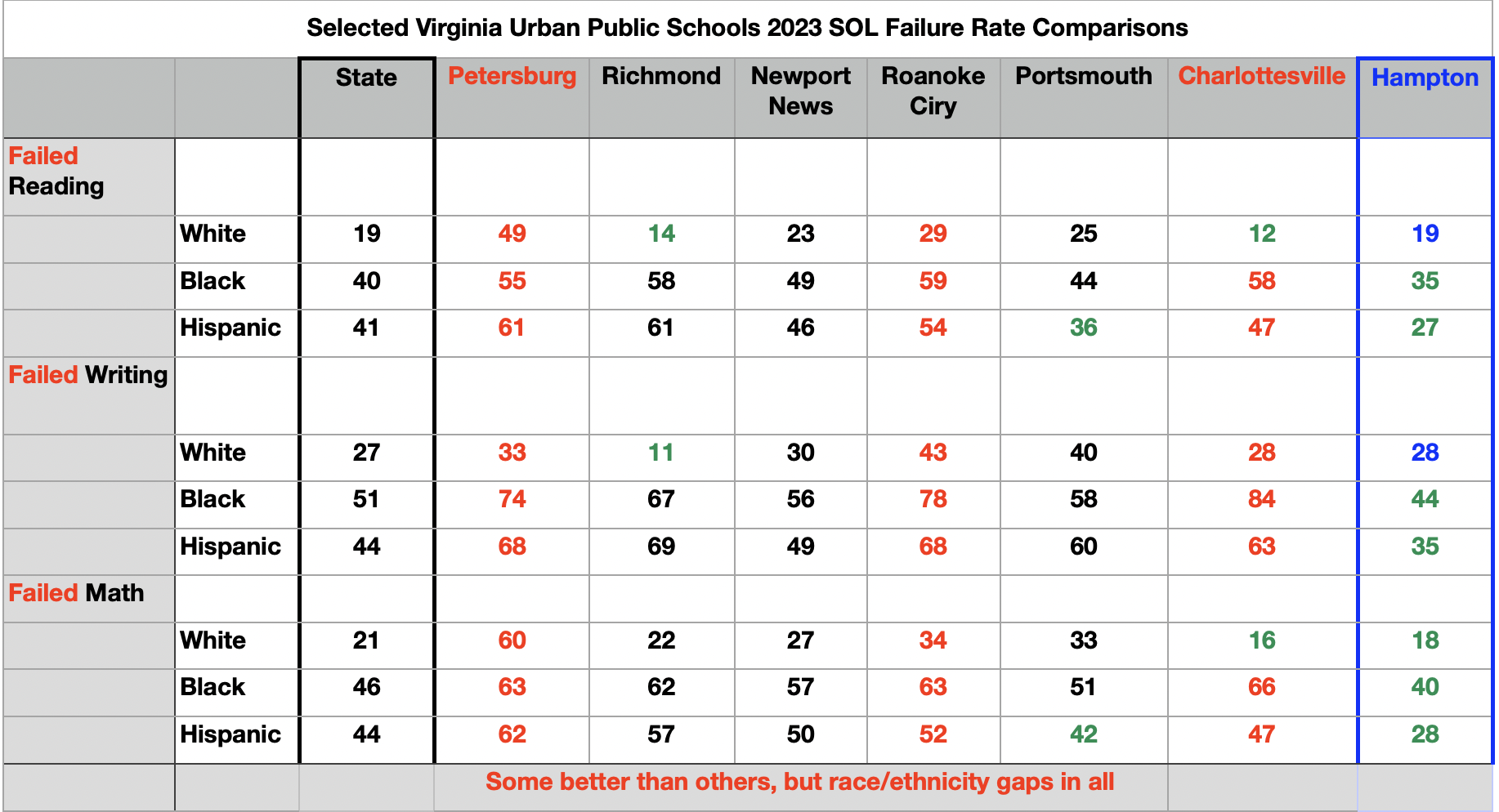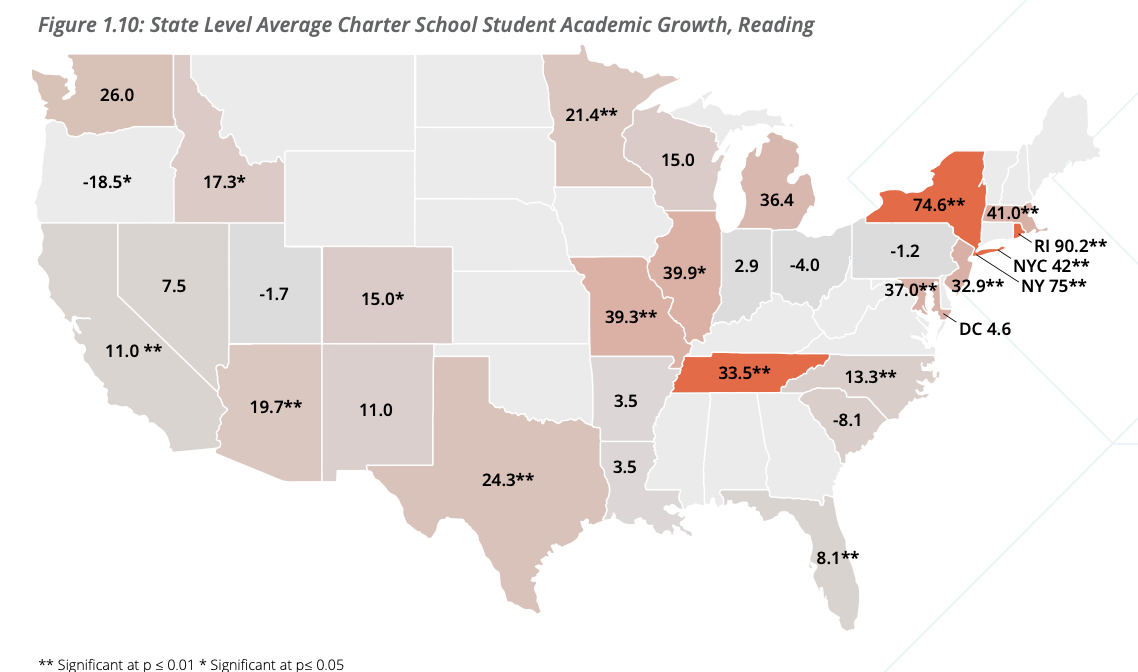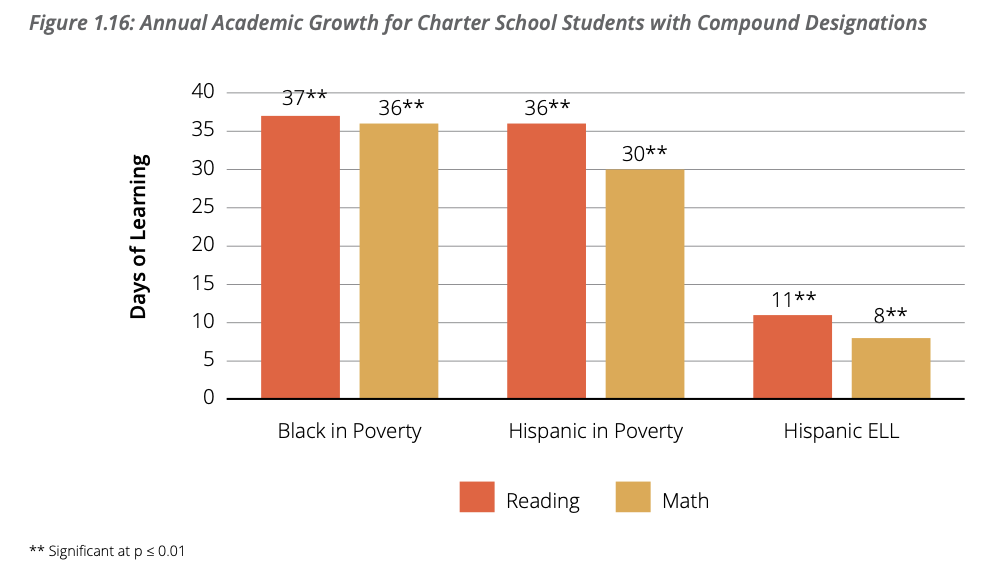We are going to discuss here — it will be a series — Virginia’s urban majority-minority school divisions.
School boards, superintendents and teachers in those divisions want their students to learn. They are especially frustrated that far too many of their minority students fail to do so.
For those divisions, an exhaustive 2023 report from Stanford’s Center for Research on Education Outcomes (CREDO) confirms that poor urban minority students can and do learn at the same or higher levels as white children.
They do so in charter schools nationwide managed by the best Charter Management Organizations (CMO).
The results reported are stunning.
CMO schools make a bigger difference in urban environments, and for poor minority kids, than anywhere else for any other populations.
Those kids come to school. They and their parents like school. In some of the toughest neighborhoods in America.
Readers who oppose charter schools think there are unacceptable explanations for that. Fair enough. CREDO addresses every one of the commonly cited rationalizations and bats them away. We will get to that in a follow-on article.
What matters here is that the study, focused on equity, finds over 1,000 “gap buster” public charter schools, most run by CMOs, that deliver academic results that eliminate the learning gap across student groups.
these schools deliver hundreds of independent proof points that learning gaps between student groups are not structural or inevitable; better results are possible.
I hope Virginia’s urban school divisions will grasp that lifeline for the sake of the kids, parents and teachers.
For the Stanford project description we go to the source. Check the 5-minute video above. It offers an important introduction.
CREDO has published insights across three studies over 15 years. Selected highlights from the link:
In both reading and math, charter schools provide students with stronger learning compared with the learning in the TPS that are otherwise available to them.… Charter schools produce superior student gains despite enrolling a more challenging student population than their adjacent (Traditional Public Schools) TPS.
They move Black and Hispanic students and students in poverty ahead in their learning faster than if they enrolled in their local TPS. They are more successful than the local TPS alternatives across most grade spans and community settings.
Some charter schools provide less student learning than their local district schools, although a larger proportion delivers better learning outcomes.
The latter group includes more than 1,000 charter schools managing staffing and resources to deliver superior academic results, eliminating the learning gap across student groups.…
The discretion that charter schools enjoy does not guarantee each school or every charter network realizes strong student outcomes. … Especially in the post-pandemic era, the need for charter boards and authorizers to address under-performance in their schools has never been more critical.
Closure is not the sole remedy. As we learned from our special investigation, the takeover of underperforming schools by strong CMOs led to improved student learning for the students who remained enrolled before and after the transfer. The gains did not adversely affect student academic progress in the rest of the CMOs’ schools. This policy tool may have broader utility than previously realized.
The real surprise of the educational study is the number of charter schools that have achieved educational equity for their students — we call them “gap-busting” schools.
Ensuring equivalent yearly growth across student groups has two critical consequences:
First, ensuring minority and poverty students learn on par with or better than their White peers interrupts or reduces the achievement gap. It happens regularly in a large swath of charter schools.
More critically, there is strong evidence that these gap-busting schools can be scaled. Added to the TPS that achieve similar results, this is the life-transforming education that so many students need.
Second, these schools deliver hundreds of independent proof points that learning gaps between student groups are not structural or inevitable; better results are possible. [Emphasis added.)
Negative findings.
The report shows that online charter schools overall do not perform well compared to traditional brick and mortar public schools. Unsurprising, but noted.
It also shows that charter schools as a group underperform TPS in special education. We’ll look at that in an upcoming article.
White students, significantly underrepresented in CMO schools compared to TPS, in general do not get any academic benefit in reading and do not do as well in math.
Each of those represent national measurements. Local public schools, both charters and traditional, will vary, often a lot.
If students in any of those categories are thriving in their current school, parents will choose to keep them there. But we must acknowledge that Virginia has some urban schools in which no student is thriving.
Virginia charter schools. Virginia is not represented in the Stanford review, because it has insufficient scale — seven charter schools, all stand-alone (SCS).
One, Richmond Career Education and Employment Charter School, has only 27 students. Another, York River Academy, has 68.
The others are smaller, richer and whiter than their nearby TPS.
Bottom line. The next figures show academic growth in charter schools expressed as positive or negative days of learning in reading and math measured by state standardized tests compared to traditional public schools in the same locality.
As example:
But stand-alone charters (one or two schools under same management) far underperformed CMO charters nationwide.
 Honoring that trend, no Virginia charter school is a gap buster.
Honoring that trend, no Virginia charter school is a gap buster.
Governor Youngkin, in an attempt to add charters in Virginia, with the approval of the General Assembly has funded charters developed and run by colleges and universities — lab schools.
The Stanford report shows that charter schools run by institutions of higher learning and their ed schools do not perform well. (I will choke back a comment.)
Finally, the chart below shows what we all seek.
Thirty to 37 extra days of school equivalent improvements. Those gains are so phenomenal they must not be ignored.
Virginia’s Constitution, absent a revision, gives school divisions control. The state cannot intervene. Thus, failed Virginia school divisions and schools go on forever ruining children’s lives — with ever-increasing federal funding — no matter what, until the divisions themselves act.
They can no longer say there is no winning option. Those with failed schools can seek out “gap buster” CMOs sorted by quality at the end of the Stanford report.
All of them say they seek equity.
I challenge them to go and get it:
- either do the right thing: invite successful CMOs to offer terms for operating charters in their divisions; or,
- look in the mirror and see what type of person is looking back.
Updated Dec 28 at 14:50 with opening chart.




Leave a Reply
You must be logged in to post a comment.